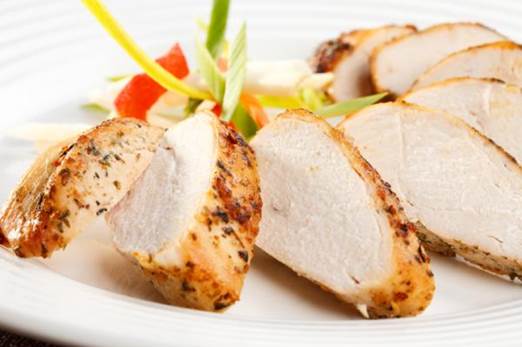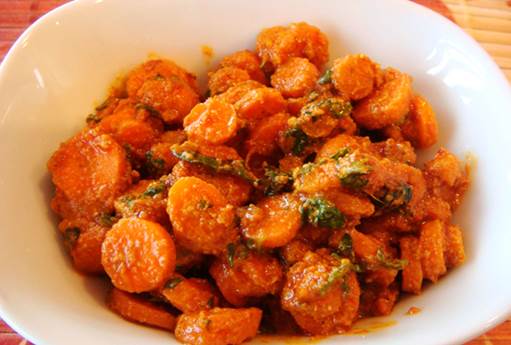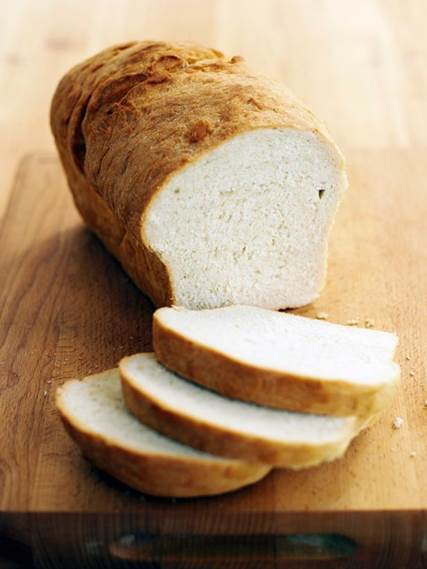If moms think that bread lack nutrients or
children should eat less when sick, then you’re wrong.
1. Children need to eat lean meat a lot in order to prevent anaemia.
Iron deficiency is popular in children.
According to Centre for Disease Control and Prevention located in Atlanta
(USA), 9% of children in the age of 1-2 have iron deficiency. This number is
down to 3% at children from 3-5 years old and 2% at 6-to-11-year-old ones.

Children
needn’t eat too much lean meat.
Children can receive enough protein in
their regimens that they don’t need to eat so much lean meat (this is good news
since lean is tough and hard chewing to babies although it contains iron that
is easily absorbed). For lazy eating babies, we can fulfill their iron needs by
feed them milk, eggs, fowl’s meat, fish, red beans, bread and dried fruits like
raisin…
Babies under 10 years old need at least
10mg iron a day. If you think that your baby lack iron, you should have a
conversation with the pediatrician about how to provide it with multivitamins
that contains iron.
2. Not allowing your kids eating fatty foods to avoid obesity
Every day, children need about 30-40% of
calories from fat to meet the need of brain because of the special need of
amino acid and other fat components of brain that the physical development
increases fast.
The suitable quantity of fat for children
under 1 year old is 3.5g/kg per day. The best is providing children with fat
from vegetable oil, fish fat which contain rich omega-3 helping increase body
resistance, reducing infections, and also supporting circulation system.

It’s
wrong not to allow kids eating fat in order to avoid obesity.
3. Providing multivitamins for kids that refuse to eat vegetables
There are many kids that avoid eating
vegetables, but they do not lack vitamins or essential minerals. Sweet
nutritional foods are fresh fruits. “Fruits can compare with vegetables for the
amount of vitamin and fibrous matter.”- said Jo Ann Hattner (Pediatric
nutrition expert in Palo Alto, California). For that reason, you must ensure 5
vegetable-and-fruit serves a day for them.
If children don’t touch any carrot, apricot
and water melon are good backup solutions because of their great content of
vitamin and carotene. Strawberries and orange can satisfy the need of folic
acid for babies that refuse to eat spinach. Bananas helping children who refuse
potatoes have enough potassium. And, citrus can replace broccoli for its content
of vitamin C.
However, even though your kids avoid
vegetables, you still have to stimulate them. Vegetables have a great number of
vitamin and essential minerals that they shouldn’t miss.
4. Feeding your kids with lots of carrots

According
to expert, carrot supplement should be sensible.
Though carrot is really good for baby’s
health, moms shouldn’t overuse it. Letting your kids eat lots of carrots and
tomatoes is not good. Eating too much carrot can bring aneamia to your babies
so that they are easily infected with jaundice, appetite loss, mental
instability, restlessness. Even at night, they are usually startled, scared,
cry and have other symptoms.
According to expert, carrot supplement
should be sensible. Children need to be fed with carrots twice a week and
30-50g each time. That would inhibit the development of cancer cells.
5. Children should eat fewer when sick
You shouldn’t cut down on children’s foods.
They need every nutrient and liquid from foods to fight against diseases. But,
if you kids don’t eat much, you shouldn’t be worried; when they’re sick, let
them eat what they like.
6. Only using vegetable juice
Some people believe that broth is
nutritious. So, after simmering bones or meat, most of them take off the bones
or meat and keep the broth to cook with vegetables.
But, nutritional analysis shows that although
protein (meat, fish, shrimp…) has been kept in the solid part for a long time, it
still does not go into the broth, so does the solid part of vegetables. So, if
you want your kids to receive enough nutrients, you have to let them eat the
solid part of foods by finely chopping, and having it well cooked. Otherwise,
your babies can’t absorb enough fibers in vegetables.
7. Juice is a wonderful drink

The
high level of sugar in juice can destroy the enamel and stomach discomfort.
Though the fresh juice is definitely more
nutritious than soda, it does not mean that you should drink it whenever you
feel thirsty. There are limitations of kid’s juice drinking. Without that, kids
could find appetite in other foods. Moreover, the high level of sugar in juice
can destroy the enamel and stomach discomfort.
The nutrition expert recommends that the greatest
amount of juice is 100-120ml/day. Water’s still the best choice for thirst.
8. Crushing out every food
By crushing out foods, moms accidentally
take away children’s chewing opportunities. Crushed foods create swallowing
habit to children. Because of that, they can’t feel the taste of food, leading
to anorexia.
In fact, moms shouldn’t overuse blender to
make crushed food. Teach your kids to eat by themselves, so when the time of
eating comes at kindergarten, they can quickly fall in line with the same age
group.
9. White bread has no nutrients.

White
bread is the best choice.
White bread which is made of flour that has
quality is still the no.1 choice to children. White bread has fibrous matter
that helps prevent constipation, heart disease, high blood pressure, and
diabetes. Besides, white bread can be provided iron and B-group vitamins like
niacin, folic acid, thiamin, riboflavin.
10. Over-prioritizing
protein
Some mothers put so much meat, or many fish,
eggs in children’s powder just because they think it’s nutritious and good for them.
In fact, it is not good because the high
level of protein easily cause gastrointestinal disorder in children and
increase the risk of having anorexia.